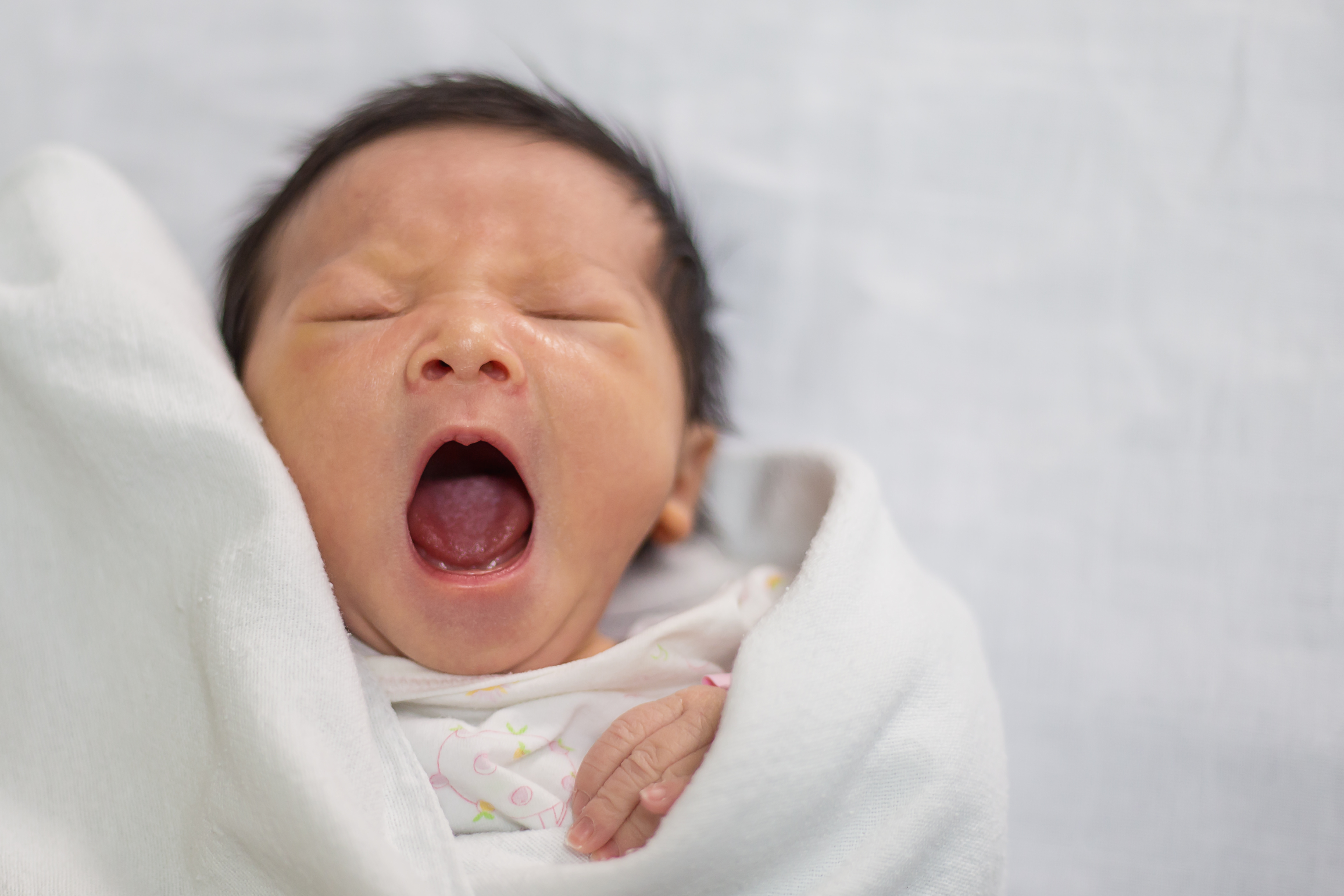Updated article : October, 2023.
I saw baby Charlotte at work, she was three weeks old, and the parents were proud to tell me she had a great skin colour. I told them that she had newborn jaundice which can take six to eight weeks to dissipate. It’s best to assess a baby’s skin color under natural light, as artificial light can change perception and make the skin appear more yellow than it really is. The head is the last part of the body that will change to its right colour given that the yellow pigment reacts to light (the rest of their body is usually covered). Poor parents, I just burst their bubble, but we had a good laugh nonetheless…😊
Jaundice may also be referred to as neonatal jaundice or benign transient cholestasis.
Pathological jaundice
In the hospital when they tell you your baby has jaundice, it doesn’t mean they have pathological jaundice (abnormal). Their bilirubin blood rate (yellow pigment) is not at a dangerous level. Almost all babies have jaundice (60-80%), but to varying degrees and often without turning yellow. As far as prevention is concerned, all babies are evaluated clinically after birth, but also by a blood sample taken from the heel. The bilirubin level in the blood is calculated according to the number of hours of life. This is a systematic screening for all babies, according to the 2022 health recommendations of the American Academy of Pediatrics. It is also possible to perform tests using a transcutaneous measuring device on the baby’s forehead or chest, which is considered a reliable screening method. These tests can be carried out at home by nurses in certain sectors of the healthcare network. It is important to perform these tests before any treatment, since visual assessment of jaundice alone is not an acceptable measure of whether the situation is under control for the baby.
Physiological jaundice
This is called physiological jaundice because, at birth, the baby has too many red blood cells for its size. There is massive destruction of its hemoglobin, which is called hemolysis. That is why there’s an accumulation of a yellow pigment in their blood circulation, and this will make their skin yellowish in colour called jaundice. This accumulation will dissipate as the liver, skin exposure to light and bowel movements do their jobs. Blood RH incompatibility is another factor that can sometimes increase a baby’s jaundice, as well as breastfeeding and other health problems. Significant body jaundice that appears within the first 24 hours of life, or jaundice that persists beyond two weeks of life, should also be reassessed for early detection of a possible underlying source.
Symptoms
The baby may sleep more and be less toned, and their suction capacity will be inadequate. Your baby will be monitored to ensure that the symptoms disappear after a few days through milk consumption and bowel movements that will be, surprise, yellow in color. Monitoring by public health professionals will continue after returning home.
Bilirubin : the physiological antioxidant
Nature is well designed. Today, following in-depth research on the topic, we know that bilirubin is a potent physiological antioxidant that can protect many cells in mammals, including humans (and newborns). So we can say that newborn jaundice, as long as there are no health problems, is beneficial as the bilirubin protects the baby’s cells.
Hyperbilirubinemia
In the hospital, if the baby has an overly high level of bilirubin in its blood, which is called hyperbilirubinemia (which affects up to 60% of babies including premature babies), and the situation is not necessarily dangerous, the doctor will request increased monitoring. They may prescribe phototherapy for the baby. This is a small bed where the baby will be placed under a light wearing their diaper. This helps speed up the elimination of the yellow pigment through the skin and prevent a harmful accumulation that can pass through the brain barrier and cause damage (neurotoxicity and encephalopathy risks). There are different degrees to designate an overly high concentration of bilirubin in the blood (serious, severe and dangerous hyperbilirubinemia) (Delta curves).
Light shone directly on the baby causes the skin to dry out considerably and requires a good supply of milk to compensate for fluid losses, since dehydration would increase the bilirubin content of the blood. That’s why, before using phototherapy, it’s important to make sure that it’s necessary in the first place, and not to treat a benign form of neonatal jaundice which is completely harmless for the baby. Blood bilirubin levels will be reassessed after 12 hours of phototherapy to ensure that the treatment is working well in the newborn.
Early jaundice
Early jaundice often occurs in Asian, Indian and Hispanic children, and also in the presence of specific illnesses or conditions such as hypothyroidism, intestinal function problems, liver or blood disease or an infection.
Premature baby and jaundice
A premature baby will often need phototherapy because their liver is still immature and it’s much more difficult for them to eliminate the accumulating bilirubin. This will be for a short period, and it prevents potential complications that could follow.
Other things you can do to eliminate jaundice:
- Cohabitate with your baby
- Start breastfeeding as quickly as possible, and frequently breastfeed to promote hydration and engorgement. The best thing to do for jaundice and to help the mother breastfeed her baby is to promote good milk flow and ingestion
- Ensure proper latching and nutritious breastfeeding
- Avoid water supplements or formulas
- Monitor the baby’s first stools, can compare their stool and urine elimination from day to day
- Monitor the baby’s weight
I hope this short article has helped you better understand newborn jaundice.
Talk soon,
Marie
The Baby Expert


